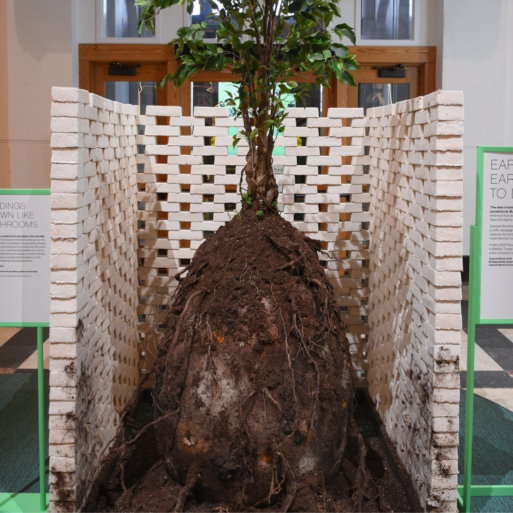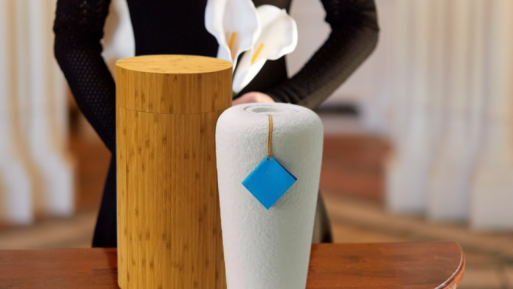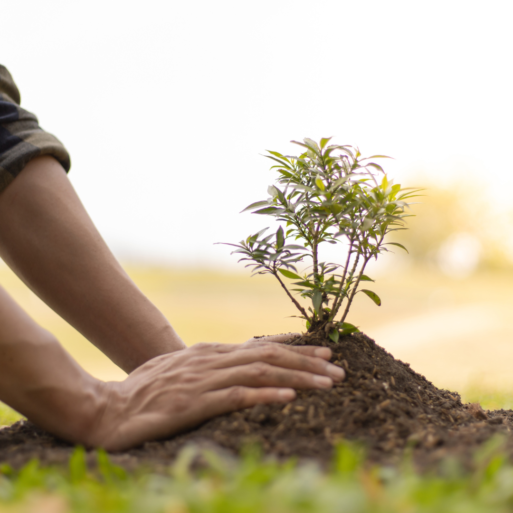
A tree grows from a Capsula Mundi biodegradable whole-body burial pod.
Credit: Flicker
The death care industry struggles with some problematic ecological issues. Traditional burial methods waste tons of valuable nonrenewable resources, deposit millions of tons of chemical and material pollution into the ecosystem, and graveyards problematically occupy arable tracts of land. One proposed method, which has gained immense popularity over the last few years, is to memorialize loved ones in burial pods.
Before you decide to utilize a burial pod for your loved one, there are a few important things you should understand.
What are Burial Pods?
Initially, burial pods look like an innovative, eco-friendly alternative to traditional burial practices. There are two types: whole-body pods, and cremation-based pods. Whole body burial pods – in which a full body is placed in the fetal position surrounded by natural cloth and then placed in the ground for burial – are not yet commercially available, although the Italian company Capsula Mundi is working on it. Theoretically, this method of burying human remains would eliminate much of the pollution created by traditional methods, although one of the major kinks they need to solve is whether the conditions created in the buried pod would actually nourish a growing tree.

Examples of biodegradable cremation urns.
Cremation-based pods, also called burial pods, are widely available and come in a number of different variations. These pods are typically biodegradable urns designed to hold human (or pet) ashes in a slow-degrading capsule, which can then be buried under an existing tree or used to grow a new plant.
The Sticky Issues:
Burial pods are marketed as the ecological solution to burying a loved one, which is not entirely inaccurate. They are certainly a “lesser evil” in that they are usually made with upcycled and biodegradable materials, take up less space and create less pollution overall. However, many retailers conveniently gloss over the fact that in order to use a cremation-based pod, you still need to cremate the remains.
As a fossil fuel-driven process, cremation produces significant amounts of carbon dioxide. One cremation is estimated to produce 535 pounds of carbon dioxide – the equivalent of a 600 mile journey by car. Other noxious substances, like soot, mercury, carbon monoxide, nitrogen oxides, and sulfur dioxide are also released as byproducts of the combustion process. Additionally, human ashes don’t decompose. So, for a burial pod to be truly environmentally friendly, an alternative method of breaking down the remains would be necessary. (One company, Better Place Forests, recommends alkaline hydrolysis, or water cremation, as an alternative. Even better would be human composting, which is available in some states and would eliminate the need for cremation altogether.)

The second problem has to do with biochemistry. While cremation ashes are composed of nutrients that plants require, like calcium, potassium, and phosphorus, they also contain an extremely high amount of salt, which is toxic for most plants and can be leached into the soil. Cremains (cremated remains) are also lacking essential micronutrients that plants need in order to thrive, like manganese, carbon, and zinc. Finally, cremation ashes also have a very high pH level, which can be toxic to some plants as it prevents the natural release of beneficial nutrients within the soil.
Most burial pods claim to contain specially formulated soils that counteract these nutritional deficiencies and pH imbalances, allowing for normal, supported growth to occur. (Be advised: regular soil and potting soil do not have the buffering capacity to lower pH.) Without a pod, small amounts of human ashes mixed into the soil or spread on the surface of the planting area shouldn’t harm plants or negatively affect soil pH.
What to Look For:
Although this might seem like a lot of doom and gloom, burial pods are still a greener option than most traditional burial practices, and can be a wonderful way to memorialize a loved one. When researching burial pods, it might help to look for a few things that would help you feel confident that you’ve made the right choice:
• Some burial pod providers offer soil analysis services as part of their package deal. This shows an understanding of the fact that soils vary widely from place to place, and indicates they want to ensure a healthy growing environment wherever you plan to bury the pod.
• Try to select a burial pod that contains soil designed to neutralize the cremains, so that they don’t pollute the soil after the urn decomposes.

 Burial Pods Might Not Be as “Green” As You Think
Burial Pods Might Not Be as “Green” As You Think


 How Dare You Die Now!
How Dare You Die Now!

 “Help Me, Helen”
“Help Me, Helen”














